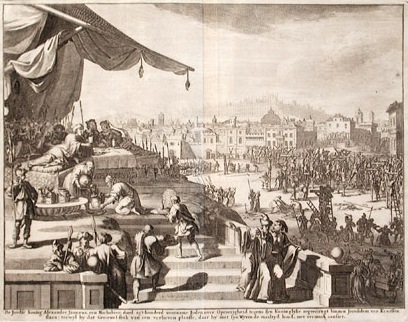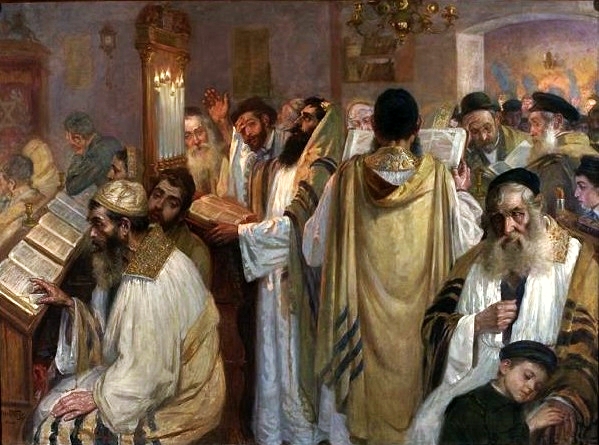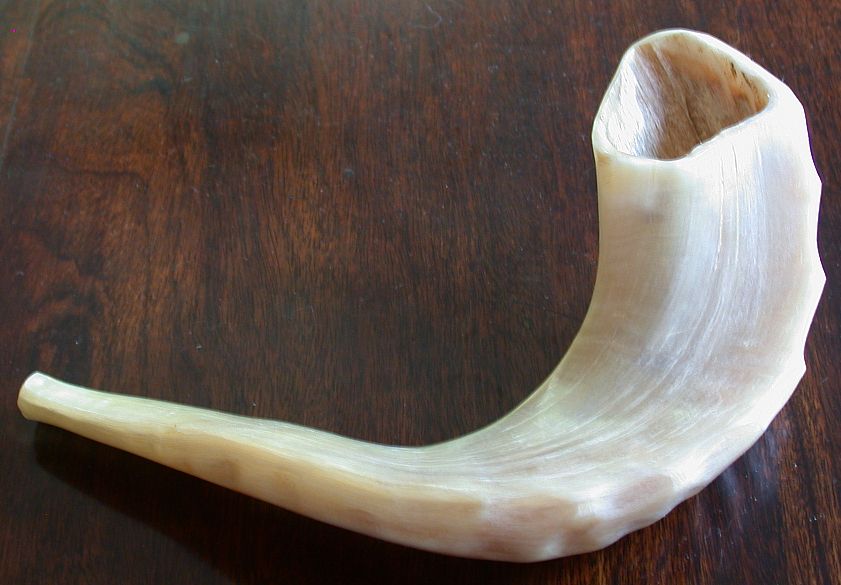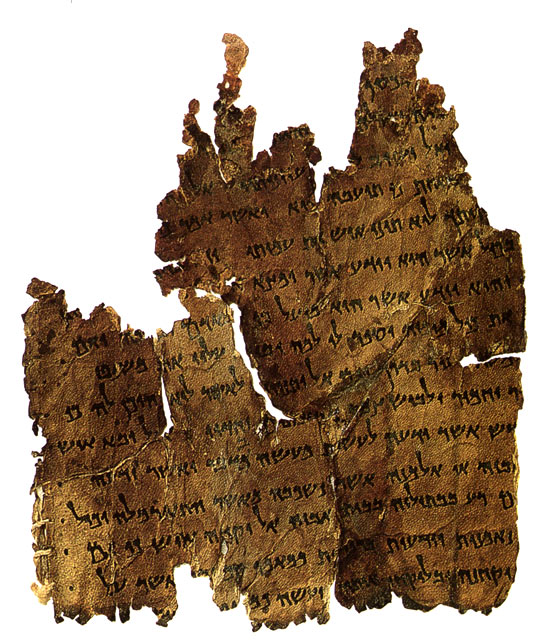|
Wicked Priest
Wicked Priest (; Romanization of Hebrew, Romanized Hebrew: ''ha-Kohen, kōhēn hā-rāš'ā'') is a sobriquet used in the Dead Sea Scrolls ''pesher, pesharim'', four times in the Habakkuk Commentary (1QpHab) and once in the Commentary on Psalm 37 (4QpPsa), to refer to an opponent of the "Teacher of Righteousness." It has been suggested that the phrase is a pun on "ha-kōhēn hā-rōš", as meaning "the Kohen Gadol, High Priest", but this term for the High Priest was obsolete at the time. He is generally identified with a Hasmonean (Maccabees, Maccabean) High Priest or Priests. However, his exact identification remains controversial, and has been called "one of the knottiest problems connected with the Dead Sea Scrolls." The most commonly argued-for single candidate is Jonathan Apphus, followed by his brother Simon Thassi; the widespread acceptance of this view, despite its acknowledged weaknesses, has been dubbed the "Jonathan consensus." More recently, some scholars have argued th ... [...More Info...] [...Related Items...] OR: [Wikipedia] [Google] [Baidu] |
Book Of Psalms
The Book of Psalms ( , ; ; ; ; , in Islam also called Zabur, ), also known as the Psalter, is the first book of the third section of the Tanakh (Hebrew Bible) called ('Writings'), and a book of the Old Testament. The book is an anthology of Hebrew religious hymns. In the Jewish and Western Christian traditions, there are 150 psalms, and several more in the Eastern Christian churches. The book is divided into five sections, each ending with a doxology, a hymn of praise. There are several types of psalms, including hymns or songs of praise, communal and individual laments, royal psalms, imprecation, and individual thanksgivings. The book also includes psalms of communal thanksgiving, wisdom, pilgrimage and other categories. Many of the psalms contain attributions to the name of King David and other Biblical figures including Asaph, the sons of Korah, Moses and Solomon. Davidic authorship of the Psalms is not accepted as historical fact by modern scholars, who view it a ... [...More Info...] [...Related Items...] OR: [Wikipedia] [Google] [Baidu] |
Community Rule
The ''Community Rule'' (), which is designated 1QS and was previously referred to as the ''Manual of Discipline'', is one of the first scrolls to be discovered near the ruins of Qumran, the scrolls found in the eleven caves between 1947 and 1954 are now referred to simply as the Dead Sea Scrolls. The Rule of the Community is a crucial sectarian document and is seen as definitive for classifying other compositions as sectarian or non-sectarian ( 1QpHabakkuk; 1QM; the Hodayot; and CD are other core sectarian documents). Among the nearly 350 documents (900+ manuscripts) discovered, roughly 30% of the scrolls are classified as "sectarian." Discovery The most complete manuscript of the ''Community Rule'' was found in Cave 1, and was first called the Manual of Discipline by Millar Burrows. It is now designated 1QS (which stands for : "Cave 1 / Qumran / "Serekh" = 'rule'). Numerous other fragments of this document, containing variant readings, were found in caves 4 and 5 (4QSa–j, 5 ... [...More Info...] [...Related Items...] OR: [Wikipedia] [Google] [Baidu] |
Diarchy
Diarchy (from Greek , ''di-'', "double", and , ''-arkhía'', "ruled"),Occasionally spelled ''dyarchy'', as in the ''Encyclopaedia Britannica'' article on the colonial British institution duarchy, or duumvirate. is a form of government characterized by co-rule, with two people ruling a polity together either lawfully or '' de facto'', by collusion and force. The leaders of such a system are usually known as corulers. Historically, ''diarchy'' particularly referred to the system of shared rule in British India established by the Government of India Acts 1919 and 1935, which devolved some powers to local councils, which had included native Indian representation under the Indian Councils Act 1892. 'Duumvirate' principally referred to the offices of the various duumviri established by the Roman Republic. Both, along with less common synonyms such as biarchy and tandemocracy, are now used more generally to refer to any system of joint rule or office. A monarchy temporarily con ... [...More Info...] [...Related Items...] OR: [Wikipedia] [Google] [Baidu] |
Qumran
Qumran (; ; ') is an archaeological site in the West Bank managed by Israel's Qumran National Park. It is located on a dry marl plateau about from the northwestern shore of the Dead Sea, about south of the historic city of Jericho, and adjacent to the modern Israeli settlement and kibbutz of Kalya. The Hellenistic civilization, Hellenistic period settlement was constructed during the reign of Hasmonean dynasty, Hasmonean leader John Hyrcanus () or somewhat later. Qumran was inhabited by a Jewish religious movements#Sects in the Second Temple period, Jewish sect of the late Second Temple period, which most scholars identify with the Essenes; however, other Jewish groups were also suggested. It was occupied most of the time until and was destroyed by the Roman Empire, Romans during the First Jewish–Roman War, possibly as late as 73 CE. It was later used by Jewish rebels during the Bar Kokhba revolt. Today, the Qumran site is best known as the settlement nearest to the Qumran ... [...More Info...] [...Related Items...] OR: [Wikipedia] [Google] [Baidu] |
Sadducees
The Sadducees (; ) were a sect of Jews active in Judea during the Second Temple period, from the second century BCE to the destruction of the Second Temple in 70 CE. The Sadducees are described in contemporary literary sources in contrast to the two other major sects at the time, the Pharisees and the Essenes. Josephus, writing at the end of the 1st century CE, associates the sect with the upper echelons of Judean society. As a whole, they fulfilled various political, social, and religious roles, including maintaining the Temple in Jerusalem. The group became extinct sometime after the Siege of Jerusalem (70 CE), destruction of the Second Temple in 70 CE. Etymology The English term entered via Latin from . The name Zadok is related to the root , (to be right, just), which could be indicative of their aristocratic status in society in the initial period of their existence. History According to Abraham Geiger, the Sadducee sect of Judaism derived their name from that ... [...More Info...] [...Related Items...] OR: [Wikipedia] [Google] [Baidu] |
Yom Kippur
Yom Kippur ( ; , ) is the holiest day of the year in Judaism. It occurs annually on the 10th of Tishrei, corresponding to a date in late September or early October. For traditional Jewish people, it is primarily centered on atonement and repentance. The day's main observances consist of full fasting and asceticism, both accompanied by extended prayer services (usually at synagogue) and sin confessions. Some minor Jewish denominations, such as Reconstructionist Judaism, focus less on sins and more on one's goals and accomplishments and setting yearly intentions. Alongside the related holiday of Rosh Hashanah, Yom Kippur is one of the two components of the High Holy Days of Judaism. It is also the last of the Ten Days of Repentance. Name The formal Hebrew name of the holiday is , 'day fthe atonements'. This name is used in the Bible, Mishnah, and Shulchan Aruch. The word 'atonement' is one of many Biblical Hebrew words which, while using a grammatical plural form, ... [...More Info...] [...Related Items...] OR: [Wikipedia] [Google] [Baidu] |
Hebrew Calendar
The Hebrew calendar (), also called the Jewish calendar, is a lunisolar calendar used today for Jewish religious observance and as an official calendar of Israel. It determines the dates of Jewish holidays and other rituals, such as '' yahrzeits'' and the schedule of public Torah readings. In Israel, it is used for religious purposes, provides a time frame for agriculture, and is an official calendar for civil holidays alongside the Gregorian calendar. Like other lunisolar calendars, the Hebrew calendar consists of months of 29 or 30 days which begin and end at approximately the time of the new moon. As 12 such months comprise a total of just 354 days, an extra lunar month is added every 2 or 3 years so that the long-term average year length closely approximates the actual length of the solar year. Originally, the beginning of each month was determined based on physical observation of a new moon, while the decision of whether to add the leap month was based on observation ... [...More Info...] [...Related Items...] OR: [Wikipedia] [Google] [Baidu] |
Damascus Document
The Damascus Document is an ancient Hebrew text known from both the Cairo Geniza and the Dead Sea Scrolls.Philip R. Davies, "Damascus Document", in Eric M. Meyers (ed.), ''The Oxford Encyclopedia of Archaeology in the Near East'' (Oxford University Press, 1997). It is considered one of the foundational documents of the ancient Jewish community of Qumran. The Damascus Document is a fragmentary text, no complete version of which survives. There have been attempts to reconstruct the original text from the various fragments. The medieval recension appears to have been shorter than the Qumran version, but where they overlap there is little divergence. The correct ordering of all the Qumran fragments is not certain. The Damascus Document's primary body of composition is a compilation of sectarian laws that have been coupled with historical information on the sect, and utilize the same figure names used in the group's ''pesharim'' commentaries. As the rules permit a woman to marry and p ... [...More Info...] [...Related Items...] OR: [Wikipedia] [Google] [Baidu] |
Eschatology
Eschatology (; ) concerns expectations of the end of Contemporary era, present age, human history, or the world itself. The end of the world or end times is predicted by several world religions (both Abrahamic religions, Abrahamic and non-Abrahamic), which teach that negative world events will reach a climax. Briefly: the eschaton is the all-inclusive term evoking this predicted climax of a particular theological or political worldview. The scope of expected consequence is global and not local. Eschatology denotes the theory, discussion, techniques, behaviors and orientation toward the eschaton. Theories of afterlife may also be a dimension of eschatology in certain contexts—in these contexts the afterlife of an individual is a kind of hologram or particular microcosm of the overall eschaton. The Eschaton is, furthermore, related to telos: a Greek word simultaneously denoting purpose, climax and end (ie. death, terminus etc. but also perfection, completion etc.). Eschaton is t ... [...More Info...] [...Related Items...] OR: [Wikipedia] [Google] [Baidu] |
Palaeography
Palaeography (American and British English spelling differences#ae and oe, UK) or paleography (American and British English spelling differences#ae and oe, US) (ultimately from , , 'old', and , , 'to write') is the study and academic discipline of historical writing systems. It encompasses the historicity of manuscripts and texts, subsuming deciphering and dating of historical manuscripts, as well as the analysis of historic penmanship, handwriting script, signification, and printed media. It is primarily concerned with the forms, processes and relationships of writing and printing systems as evident in a text, document or manuscript; and analysis of the substantive textual content of documents is a secondary function. Included in the discipline is the practice of deciphering, reading, and dating manuscripts, and the cultural context of writing, including the methods with which texts such as manuscripts, books, codices, Tract (literature), tracts, and monographs were produced, a ... [...More Info...] [...Related Items...] OR: [Wikipedia] [Google] [Baidu] |








